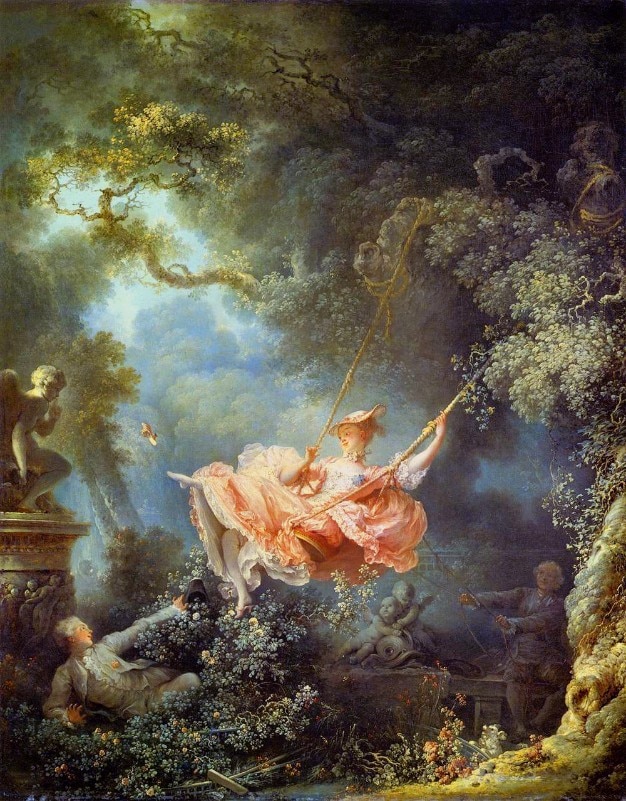Fashion Week is back, and the most famous fashion brands are presenting their autumn/winter collections – virtually. The curious public discovers the newest trends through their screens, while slim, young models show off their extravagant and beautiful dresses, outerwear, and accessories, with a particular emphasis on the shoes.
For centuries, shoes have been the object of desire for every woman, as well as the subject of the paintings of many well-known painters throughout the entire history of art. From medieval times to the 20th century, noblewomen, goddesses, nymphs, emperors, princes, and famous people have been portrayed wearing their shoes. Always hidden, yet clearly visible, shoes in paintings are a fundamental detail, and are often included as a finishing element of the person portrayed or as part of a story that only the most attentive people notice.
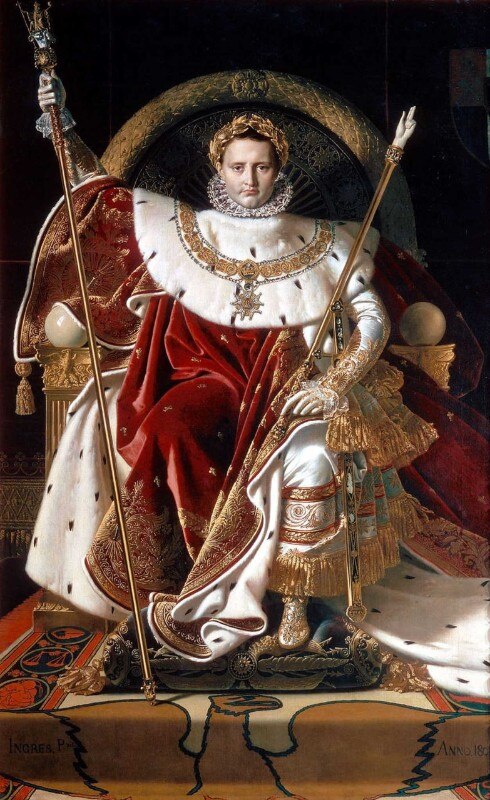
In 1806, Jean-Auguste-Dominique Ingres portrayed Napoleon Bonaparte on his imperial throne. By depicting him in a hieratic and monumental pose, the painter transformed the emperor into a kind of classical divinity. To do this, he drew inspiration from some antique engravings of Jupiter collected in a seven-volume work called Recueil d'antiqués égyptiennes, étrusques, grecques et romaines et gauleoises made between 1752 and 1767 by Anne-Claude-Philippe de Tubières, and mixed his inspiration with some statues of Jupiter enthroned created by Phidias. Rich, majestic and all-powerful, the work ends at the base with a shoe in full view pointing to the eagle depicted on the carpet. The lavishly decorated shoe emerges from the long toga and shows the emperor’s newly chosen heraldic symbol. In fact, in the decree of 10 July 1804, Napoleon replaced the symbol of the Empire that the Council of State had indicated as “azure, with a sleeping lion in gold” with an imperial eagle.
The work, conceived for political propaganda purposes, acquires greater strength, power, and independence thanks to the detail of the shoe – the great leader who chooses, decides, and leads the empire, transforming the shoe into another occasion to celebrate Napoleon as emperor.
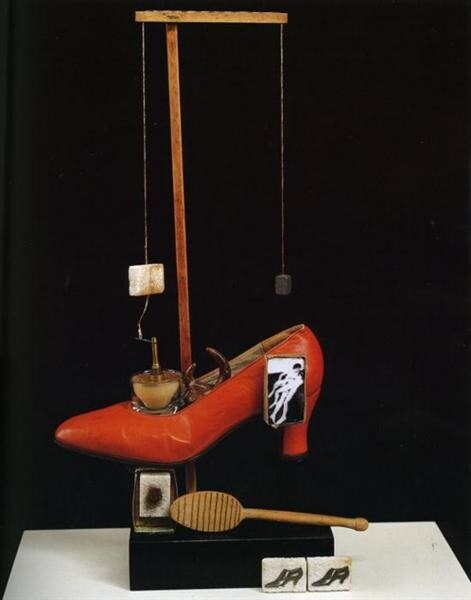
Jean-Honoré Fragonard, an interpreter of the mischievous and enthusiastic spirit of Rococo, uses the shoes as a consequence of the subject’s action in his work The Happy Accidents of the Swing.
The main themes of 18th-century Rococo art were gallant parties, public or clandestine gatherings where lovers could indulge in moments of passion or frivolous courtship, and this painting is no exception. Fragonard depicts a charming young woman swinging on a swing, teasing her suitor with languid looks and mischievous gestures, in a sequence of gestures that form a perfect love triangle, ending in the woman’s slipper, the emblem of courtship. A male figure in the bottom right, hidden in the semi-darkness, pushes the maiden into the centre of the scene, while his continuous leaps give the girl speed, even moving her clothes which intrigue the young lover lying on the left.
To confirm the theme of love, Fragonard included statues of cherubs, one of which is in the same perspective line as the slipper. In fact, the cherub is here portrayed as an accomplice, bringing his index finger to his mouth, demanding silence from the woman who, unable to say a word, drops the symbol of her feminine power.
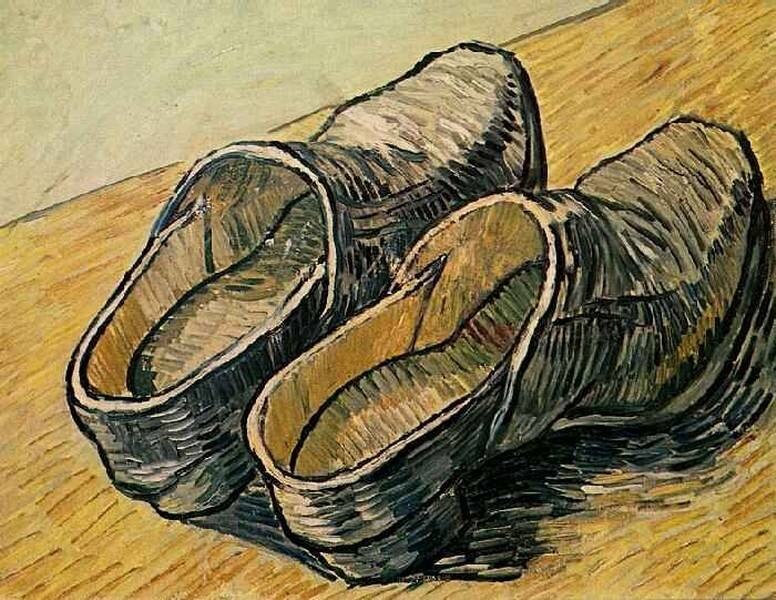
In his Ars amatoria, a meticulous manual of courtship and seduction, Ovid suggests: “Have a clean tongue, and let your teeth be free from tartar; and don’t slop about in boots that are two or three sizes too big for you”.
In Chinese culture, the shoe means possession, domination. A man could break off an engagement by sending his betrothed a pair of shoes that do not fit. In more traditional Chinese culture, the small female foot is considered an aesthetic element with a profound erotic significance, the word ‘shoe’ being expressed through an ideogram meaning ‘mutual understanding’, thus becoming a symbol of the harmony of a couple.
Artist and contemporary designer Manolo Blahnik once said: “Some men tell me I’ve saved their marriage. It costs them a fortune in shoes, but it's cheaper than a divorce”.
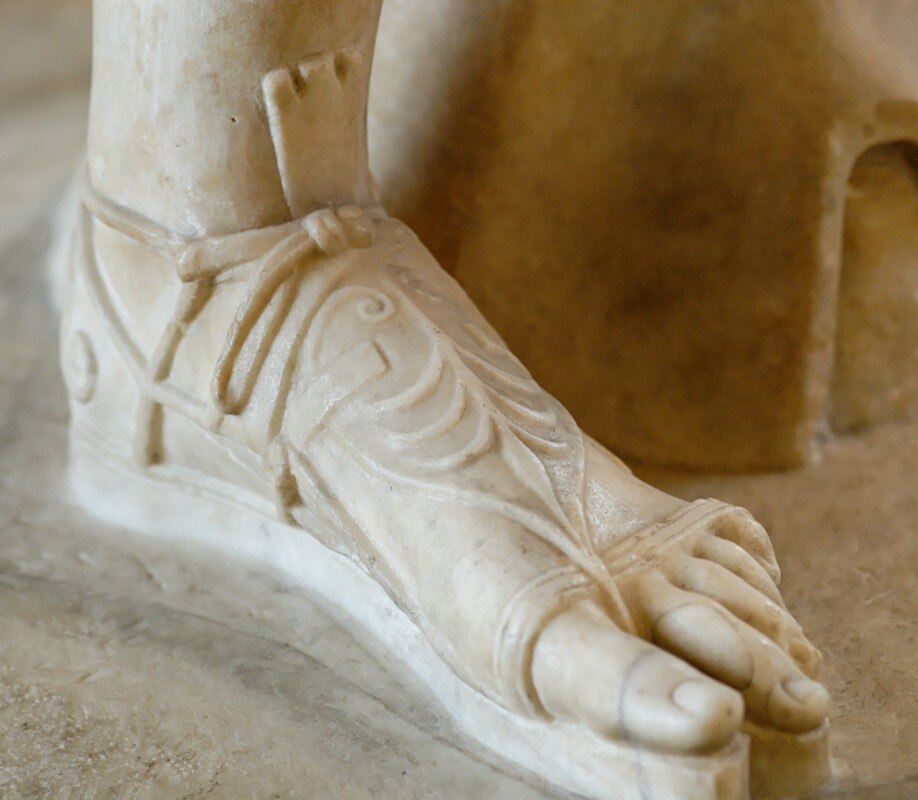
Opening image: Jean-Honoré Fragonard, The Happy Accidents of the Swing, 1767-1768


